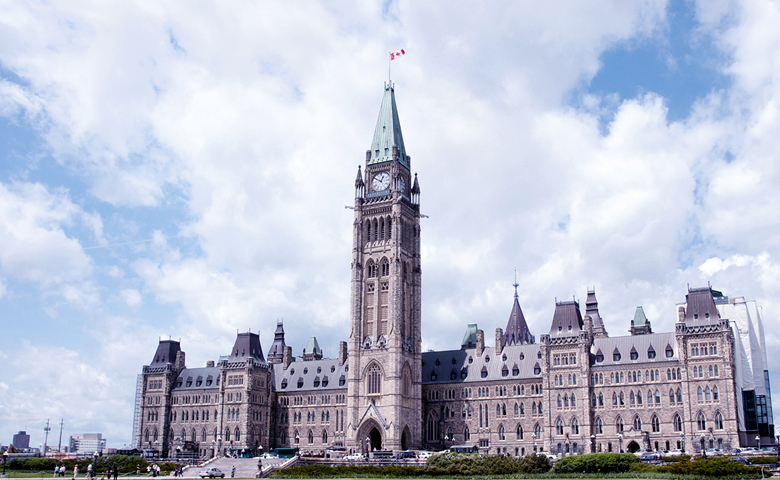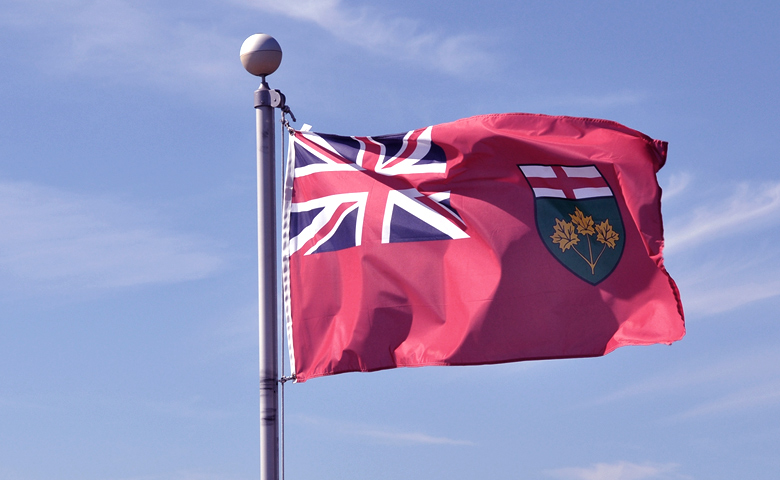Updated on Novembre 3, 2022
Did you recently immigrate to Canada? It is important to know the tax obligations associated with your new Canadian residency status.
In particular, you need to prepare properly for your first Canadian income tax return.
Regardless of the complexity of your tax situation, it is recommended you consult an international tax expert as soon as possible. They will help you identify the risks specific to your situation and accompany you in the implementation of appropriate actions. This will help you avoid unpleasant surprises.
Do you have tax obligations in Canada?
The applicable tax rules differ depending on whether or not you are considered a Canadian resident for tax purposes. Establishing your tax residency status is therefore the first step in determining your tax obligations in Canada.
Generally, if you are legally admitted to Canada as a permanent or temporary resident (worker or student), the Canada Revenue Agency and Revenu Québec (for new residents of Québec) will consider you to be a tax resident if you establish significant residential ties with Canada.
To do this, they will use criteria such as whether you have a home, spouse or dependent child in Canada, or whether you have been in the country for more than six months during the year.
Other types of ties called secondary ties could be considered in this analysis: where you work, where your assets are located, etc.
In some cases, you may meet the definition of a Canadian tax resident and still have significant residential ties to your home country. If Canada has a tax treaty with that country, it will be used to determine your country of residence for tax purposes based on the tie-breaker criteria in the treaty. This will ensure that your income is not taxed twice.
What income do you report?
If you are recognized as a tax resident, you will be taxed in Canada on your worldwide income from the day you settle in the country. This includes income that you continued to receive from your home country after your arrival in Canada.
Nevertheless, it should be noted that such foreign income may be subject to home country tax at the same time. Again, if there is a tax treaty between Canada and the foreign country, double taxation can often be avoided.
To illustrate this taxation mechanism, let’s take the case of a U.K expatriate who has moved to Canada and is considered a tax resident here as of June 1st, applying the criteria indicated above. Between June 1st and December 31st of the year, he earned employment income in Canada, received rental income from a property he owns in U.K and received interest and dividend income from his investment accounts held in the U.K. For the purposes of this example, this investment income is not tax exempt in U.K.
As a Canadian resident for tax purposes, his employment income earned in Canada will be taxed only in Canada. U.K rental and investment income earned before his arrival in Canada (before June 1st) will be taxed only in the U.K.
On the other hand, U.K rental and investment income earned after settling in Canada will be taxed not only in Canada (country of residence), but also in the U.K (country of income source). Double taxation will be avoided, in this case, by applying the provisions of the Canada-U.K tax treaty and Canadian tax laws. These provisions give the taxpayer a credit in Canada for the tax paid in U.K, which will be used to reduce or even cancel the Canadian tax on the same income.
Other tax rules may apply for other types of income (pension income, capital gains, etc.). For each type of income, the provisions of the tax treaty must be analyzed in depth to determine the applicable tax regime.
Finally, in some cases, double taxation cannot be avoided even if there is a tax treaty. This is generally the case where taxation in Canada and in the foreign country does not occur in the same taxation year (timing mismatch). In other cases, the foreign income may be subject to an exemption or favourable tax treatment in the home country that will not be recognized by Canadian tax rules.
All of these issues highlight the importance of consulting an international tax expert, especially where tax information exchange agreements between countries are strictly enforced.
Preparing for your first tax return
1. Take an inventory of the goods/assets you owned on the date of your arrival in Canada. For each asset, you must determine the market value on that date (entry value in Canada).
Without going into detail, remember that this information will be useful to:
- calculate the Canadian tax payable when you subsequently sell your foreign property as a Canadian resident;
- determine if you have to file certain required information as of your second year of residency in Canada (form T1134 for a foreign entity in which you hold an interest and form T1135 for your other foreign property with a combined value greater than C$100,000). You could be liable for significant penalties if you fail to file these forms.
2. With the assistance of your tax consultant, list your foreign and Canadian income during the year of immigration.
3. File your Canadian immigrant tax returns. With the help of your tax advisor, you must file your first income tax return by April 30th of the year following the year in which you moved to Canada (Québec residents will have to file one federal and one provincial income tax return). This tax return will serve three purposes:
- Enter your date of entry in Canada in your tax file to prove the change in your residency status;
- Report your Canadian and foreign income earned after your arrival in Canada, and as applicable, claim a foreign tax credit to avoid double taxation;
- Report your foreign income earned before your arrival in Canada. While it is not taxable in Canada, it will be taken into consideration to calculate some Canadian tax credits.
As you can see, preparing tax returns can be a challenge for a newcomer. Our team of international tax experts can help you understand your Canadian tax obligations and prepare your next federal and provincial tax returns. Contact us to talk to one of our specialists.
07 Feb 2022 | Written by :
You could also like to read
Next article
Updated on February 19, 2024
If you have foreign property or you carry out transactions with non-residents, make sure you complete all the required tax forms.
Based on certain criteria, Canadian taxpayers (individuals, corporations, trusts, etc.) may have to file one or more information returns with the Canada Revenue Agency (CRA) each year.
Form T1134 – Information Return Relating to Controlled and Not-Controlled Foreign Affiliates
Form T1135 – Foreign Income Verification Statement
Form T106 – Information Return of Non-Arm’s Length Transactions with Non-Residents
Completing these forms is rather complex. Therefore, it is in your interest to consult an international tax specialist to help you meet all of your tax obligations.
N.B. You must file these returns even if you do not have any tax to pay, or risk incurring hefty penalties.
If you have not filed certain returns in the past, you might be able to correct your situation under the federal voluntary disclosure program. Please note that there is no equivalent form for provincial purposes.
Form T1134 – Information Return Relating to Controlled and Not-Controlled Foreign Affiliates
Information Return Relating to Controlled and Non-Controlled Foreign Affiliates is one of the tools used by the CRA to gather information about investments in foreign affiliates that are held by Canadian residents. A foreign affiliate is a corporation in which a Canadian resident has a significant interest:
- The resident owns at least 1% of the capital;
- The resident and related persons own at least 10% of the capital.
All Canadian taxpayers in this situation must file this form each year.
Here are the main points to know:
- The T1134 form includes a summary and supplements. You must file a separate supplement for each foreign affiliate in which you have a significant interest, whether or not your control this corporation.
- Caution: penalties also apply for each supplement that has not been filed and can therefore accumulate quickly.
- Even if a foreign affiliate is inactive, you must report certain information.
- The deadline for filing the form is 10 months after the end of the taxpayer’s year.
Form T1135 – Foreign Income Verification Statement
The Foreign Income Verification Statement must be filed by a Canadian taxpayer (individuals, corporations and some trusts) that, at any time during the tax year, owned specified foreign property costing more than C$100,000. It must be filed each year when this situation applies.
Here are some examples of specified foreign property:
- funds and bank accounts held outside Canada;
- shares of foreign corporations, but not those of a foreign affiliate, for which you must file form T1134;
- intangible property (patents, copyright, etc.) situated outside Canada;
- debt securities issued by a non-resident;
- shares of Canadian corporations on deposit with a foreign broker;
- real estate situated outside Canada (except those strictly for personal use);
- precious metals and futures contracts held outside Canada.
This property does not include:
- personal-use properties;
- property used or held exclusively in the course of an active business carried on by the taxpayer;
- mutual funds registered in Canada and invested in foreign shares;
- investments held in retirement funds.
Form T1135 must be filed at the same time as the Canadian taxpayers’ income tax return.
Form T106 – Information Return of Non-Arm’s Length Transactions with Non-Residents
The Information Return of Non-Arm’s Length Transactions with Non-Residents must be filed annually for all transactions between a taxpayer who carries on a business in Canada and a non-resident to which the taxpayer is related, when the total value of these transactions exceeds C$1 million during the tax year.
Transactions affected by this include in particular:
- tangible and intangible property;
- rent;
- royalties;
- services;
- advances, loans or other trade accounts payable to or receivable from related non-residents.
These transactions also apply to transactions with a partnership where a non-resident person is a partner.
Here are the main points to know:
- It is important to have an up to date, detailed portrait of your business’s structure in order to know exactly all of your non-arm’s length relationships with non-residents.
- The T106 form includes a summary and supplements. You must file a separate supplement for each non-resident with which you deal during the tax year, or risk having to pay a penalty for each unfiled supplement.
- Filing a T106 does not relieve you of the obligation to also file Form T1134 or Form T1135, if you are in a situation that requires that they be filed. For example, you might have to complete T106 and T1135 if you lend money to a foreign parent company.
- Form T106 must be filed at the same time as the income tax return.
Do you have questions? Our team of international taxation experts can help you file the required forms. Contact us to speak with one of our specialists.
03 Feb 2022 | Written by :
Olivier Gariépy is a tax expert at Raymond Chabot Grant Thornton. Contact him today!
See the profileNext article
Ethics is more than a moral issue. A strong code of ethics fosters employee commitment and supports appropriate decision-making, no matter what the context. It’s in an organization’s best interest to establish clear measures.
Ethical violations of any kind tend to have a snowball effect in a work environment. When employees see others breaking the rules without consequences, they might think it’s okay for them to do so as well. An organizational culture in which misconduct is tolerated can lead to increased turnover, decreased productivity, and even damage the organization’s reputation and profitability.
What situations require ethical rules?
An organization should have a comprehensive code of ethics that addresses all the scenarios that may affect it, including the following:
Harassment and discrimination
Harassment and discrimination are perhaps the most significant ethical issues affecting businesses today. It is imperative to protect employees from unfair treatment based on age, gender, race, religion, disability.
Fraud and other forms of financial manipulation
Organizations must maintain good accounting practices and avoid any real or perceived conflicts of interest. No organization wants to be caught up in a financial scandal.
Technology and privacy practices
Developments in artificial intelligence and technological security raise privacy concerns for both clients and employees. While electronic monitoring of employees is intended to ensure efficiency and productivity, it can sometimes border on invasion of privacy. With telework, confidential client information is being circulated outside the organization. How can this new dynamic be managed?
Social media whistle-blowing
Another challenge is knowing where to draw the line between firing or penalizing an employee over online whistle-blowing. Usually, it’s when the employee’s behaviour is considered disloyal to their employer. How does this play out in the real world?
What are the benefits of having and following a clear code of ethics?
Improved organizational image
A code of ethics promotes a positive public image by conveying values of integrity, respect for the environment, inclusion, etc.
Enhanced teamwork and cooperation
Introducing a workplace code of ethics helps to create consistent employee behaviour, which in turn promotes openness and trust. As a result, because employees know where they stand, they often perform better.
Safeguarded organizational assets
A clear code of ethics helps prevent theft or the fraudulent use of the organization’s resources.
Improved market positioning
Currently, environmental, social and governance (ESG) criteria are considered important. Organizations with ethical business practices are better positioned in the marketplace.
What should be included in a code of ethics?
A code of ethics should include a statement of the values shared by all staff members. It should also contain:
- the rules and behaviours expected of everyone;
- the mechanisms and measures to ensure compliance;
- the penalties for non-compliance.
What should be done to ensure the code of ethics is clearly understood and applied?
Involve all parties
While it is helpful to have an ethics advisor help develop the code of ethics, it is also important to ensure that all stakeholders in the organization are represented: managers, executives, employees, etc. It is easier to have standards and values respected when they are chosen instead of being imposed from outside.
Draft a concise, specific code of ethics
Does anyone remember reading the employee handbook when they were hired? Keep the code of ethics concise and to the point in a page or two:
- What does the code mean to employees?
- Why is it important?
- What does it mean for them in terms of procedures?
Be specific and avoid legalese. Tailor the code of ethics to the employees’ duties. Beyond common values, someone working in business development needs more specific or different rules than someone working in an assembly room, for example.
Focus on continuous development
Conduct several communication and awareness campaigns throughout the year, and use different media to present the information: short videos, real-life scenarios, focus groups, etc. Not everyone learns the same way.
Bring the code of ethics to life
- Set up an integrity committee that employees can turn to and make sure that there is a follow-up.
- Set up integrity lines where people can report concerns anonymously.
- Communicate to staff the actions taken in response to misconduct.
- Review the code regularly and adapt it when new ethical issues arise.
Establishing a clear code of ethics has become increasingly important in recent years. It is a key factor in dealing with major societal issues and ensuring the organization’s long-term viability. Do not hesitate to contact our experts for support in developing your code of ethics.
Next article
Updated on February 19, 2024
Canadian non-residents are taxed on rental income from their properties in the country. What about their tax obligations?
A non-resident (for tax purposes) who earns rental income must meet certain obligations with the Canada Revenue Agency (CRA). These tax obligations are the same whether the non-resident owns a single home for rent or several rental properties in the country. However, they only apply for federal purposes: there is no tax to pay or return to file for this income for provincial purposes.
There are ways to reduce this tax burden, as discussed later on, but here is the basic rule: a 25% deduction at source of the gross monthly rental income must be remitted to the CRA each month, no later than the 15th day following the payment of rent. Failure to withhold or late remittance of the deduction would result in a penalty of up to 10% of the amount of tax that should have been withheld.
Non-residents have two years after the end of the year to file a tax return to deduct rental income expenses. They will then be taxed on the net rental income (income minus expenses), based on the tax rates applicable to individuals.
The 25% monthly withholding tax will be considered an instalment on the tax liability. The CRA will then refund any overpayment.
Please note: if the tax return is not filed, the non-resident will not be able to deduct expenses and the 25% withholding on gross income will be considered a final tax.
A more advantageous solution
Another option, which is usually more advantageous for cash management, is for the non-resident to pay withholding tax based on 25% of estimated net rental income, rather than gross income.
Again, the withholding will be treated as an instalment, but will generally be much lower because it will be based on net income (i.e., income minus expenses).
To take advantage of this solution, the following conditions must be met:
- The tax obligations should be delegated to a paying agent in Canada, who is a trusted Canadian resident and who pays the tax on behalf of the non-resident;
- NR6 form and an estimate of the next year’s rental income and expenses to must be sent to the CRA before the first rent payment date. The withholding tax payment must be attached;
- Undertake to file a Canadian federal income tax return (T1159) by June 30th of the following year.
What you need to know
Regardless of the option selected, NR4 and NR4 Summary statements must be filed by March 31st of the year following the end of the taxation year or penalties may apply. These statements show the gross rental income and the tax paid to the government.
In addition, non-residents who own several rental properties in the country must include all of their rental income and expenses in the required documents.
Please note that in some countries, such as the United States, non-residents can deduct the actual tax paid in Canada from their tax return.
Finally, for individuals who have failed, in good faith, to declare their rental income earned in Canada, there is always a way to get their affairs in order while avoiding late penalties if they meet certain conditions.
Do you have any questions? Our team of international tax experts can help you meet your tax obligations and choose the most advantageous solutions. Contact us to speak with one of our specialists.
31 Jan 2022 | Written by :






